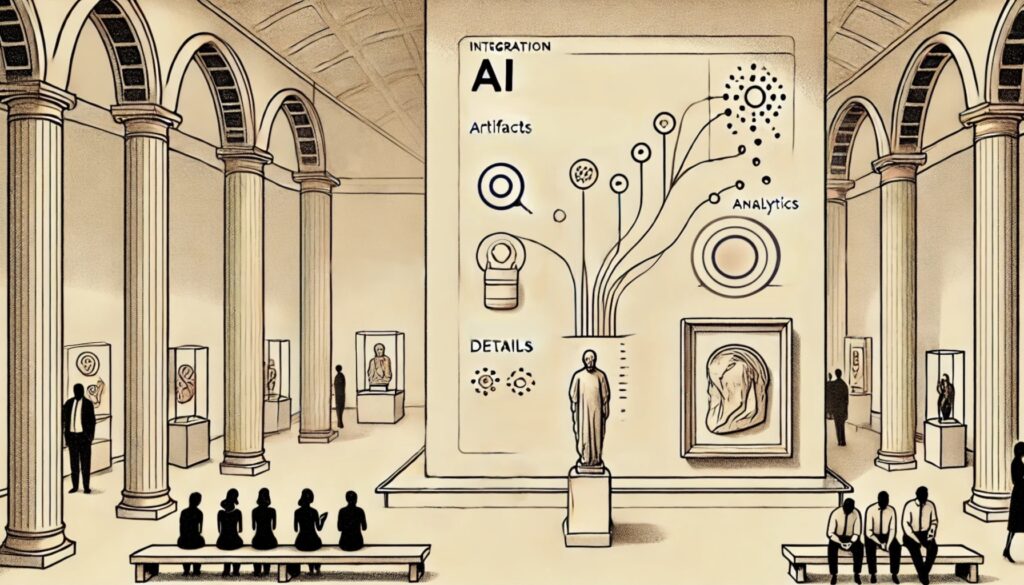Can AI Make Art and History More Inclusive?
Artificial Intelligence is transforming how museums engage with culture, but its potential to foster inclusivity comes with challenges.

Artificial Intelligence (AI) is revolutionizing industries worldwide, and museums are no exception. With the ability to analyze massive datasets, personalize experiences, and uncover hidden histories, AI offers incredible potential to make art and history more inclusive. However, as promising as these tools may seem, their implementation raises significant ethical questions. Can museums harness AI to break down barriers and amplify marginalized voices, or will these technologies end up perpetuating the very biases they aim to dismantle?
The Promise of AI for Inclusivity
Museums have long faced criticism for their lack of diversity in collections and narratives. AI has the potential to address these gaps in ways previously unimaginable.
For example, the Smithsonian Institution has used AI to digitize and catalog African American artifacts, uncovering materials that had been overlooked for decades. These tools not only expedite the research process but also allow curators to incorporate underrepresented narratives into broader exhibitions.
AI also expands access to museum collections. During the COVID-19 pandemic, virtual museum tours saw staggering increases, demonstrating a hunger for remote cultural experiences. AI-powered tools, such as augmented reality apps and virtual assistants, make it possible for people in underserved communities to engage with exhibits without ever stepping foot inside a museum. Imagine a student in a rural area exploring the Louvre’s collection via an AI-powered app.
On a more personal level, AI can create highly customized museum experiences. Just as streaming services recommend shows or movies, AI can analyze a visitor’s preferences and suggest specific artworks or artifacts to explore. This type of personalization fosters a deeper connection with the material and ensures that diverse narratives aren’t lost in the crowd.
The Risks of Bias in AI Systems
Despite these advancements, AI is not a silver bullet. The technology is only as unbiased as the data it’s trained on, and many historical archives are steeped in systemic inequities. For instance, Western art and male artists are often overrepresented in museum collections, while works by women, Indigenous creators, and artists of color are underrepresented or excluded altogether.
If these biased datasets are used to train AI systems, the algorithms risk perpetuating the very exclusivity they are meant to disrupt. In one study, AI-powered facial recognition systems failed to accurately identify non-white faces, sparking concerns about how such tools could misinterpret cultural artifacts or misrepresent marginalized histories.
Another pressing issue is the question of whose stories are prioritized. When AI is used to curate exhibits or personalize recommendations, what narratives are left behind? If museums fail to involve diverse voices in the design and implementation of AI tools, these systems could inadvertently reinforce the dominance of Western-centric perspectives.
Balancing Potential and Pitfalls
Some museums are already navigating this delicate balance. The Museum of Tomorrow in Rio de Janeiro has implemented an AI chatbot designed to reflect the institution’s mission of inclusivity and environmental consciousness. This chatbot doesn’t just answer visitors’ questions—it actively promotes values aligned with the museum’s ethos, creating a more meaningful and inclusive experience.
To ensure that AI fosters inclusivity, museums must establish clear ethical guidelines. Transparency is key: algorithms should be open to scrutiny, and the data used to train them must be representative of diverse histories and communities. Collaborations with ethicists, technologists, and community leaders can help museums avoid pitfalls and create tools that serve all audiences equitably.
What Does This Mean for the Future of Museums?
AI holds immense potential to reshape how we experience art and history, but it’s not a solution in itself. For museums, the challenge lies in harnessing this technology responsibly. By addressing biases and involving diverse voices in the process, museums can use AI to democratize access to cultural heritage and amplify marginalized narratives.
Ultimately, the question isn’t just whether AI can make art and history more inclusive—it’s whether museums are willing to make the structural changes necessary to support this goal. The future of inclusivity in museums depends not on technology alone, but on the people who wield it.
Sources: Museum Next, Artnet News, American Alliance of Museums, World Economic Forum
 Lancaster Art Vault Celebrates Black Art with ‘Expressions of Strength’
Lancaster Art Vault Celebrates Black Art with ‘Expressions of Strength’ Dallas’ African American Museum Kicks Off Black History Month
Dallas’ African American Museum Kicks Off Black History Month The African American Museum in Dallas Marks 50 Years with Founders Ball
The African American Museum in Dallas Marks 50 Years with Founders Ball Koyo Kouoh’s Appointment as 2026 Venice Biennale Curator
Koyo Kouoh’s Appointment as 2026 Venice Biennale Curator Black Art at Miami Art Week 2024: History, Events, and Cultural Impact
Black Art at Miami Art Week 2024: History, Events, and Cultural Impact

